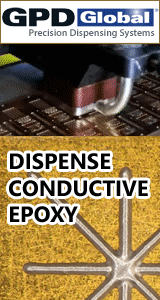Printed Circuit Board Assembly & PCB Design Forum
SMT electronics assembly manufacturing forum.
- SMTnet
- »
- Electronics Forum
- »
- placements per hour
placements per hour
Views: 3849
![]() Hi everyone,
New to the forum and have a question.
How man...
- Feb 16, 2006
by
Hi everyone,
New to the forum and have a question.
How man...
- Feb 16, 2006
by
![]()
![]() Good Morning jobbie,
We have several Mydata lines. We are...
- Feb 16, 2006
by
Good Morning jobbie,
We have several Mydata lines. We are...
- Feb 16, 2006
by
![]()
![]() It sounds like you are getting CPH numbers without taking in...
- Feb 16, 2006
by
JAX
It sounds like you are getting CPH numbers without taking in...
- Feb 16, 2006
by
JAX
![]()
![]() Hi jax
Have checked actual assemby time against machine u...
- Feb 16, 2006
by
Hi jax
Have checked actual assemby time against machine u...
- Feb 16, 2006
by
![]()
![]() Jobbie,
We are also not using the Mydata forks for the vi...
- Feb 17, 2006
by
Jobbie,
We are also not using the Mydata forks for the vi...
- Feb 17, 2006
by
![]()
![]() Hi,
One think we always hated when running MYDATA was the...
- Feb 17, 2006
by
Grant
Hi,
One think we always hated when running MYDATA was the...
- Feb 17, 2006
by
Grant
![]()
![]()
![]() To everyone who hates vibe feeders,
Follow this link-- ...
- Feb 21, 2006
by
gregp
To everyone who hates vibe feeders,
Follow this link-- ...
- Feb 21, 2006
by
gregp
![]()
![]()
![]() Are those stick feeders made from Component Express?
Th...
- Feb 21, 2006
by
FD
Are those stick feeders made from Component Express?
Th...
- Feb 21, 2006
by
FD
![]()
![]()
![]() As far as I recall the Component Express is a copy of a prot...
- Feb 28, 2006
by
gregp
As far as I recall the Component Express is a copy of a prot...
- Feb 28, 2006
by
gregp
![]()
jobbie
- SMTnet
- »
- Electronics Forum
- »
- placements per hour






